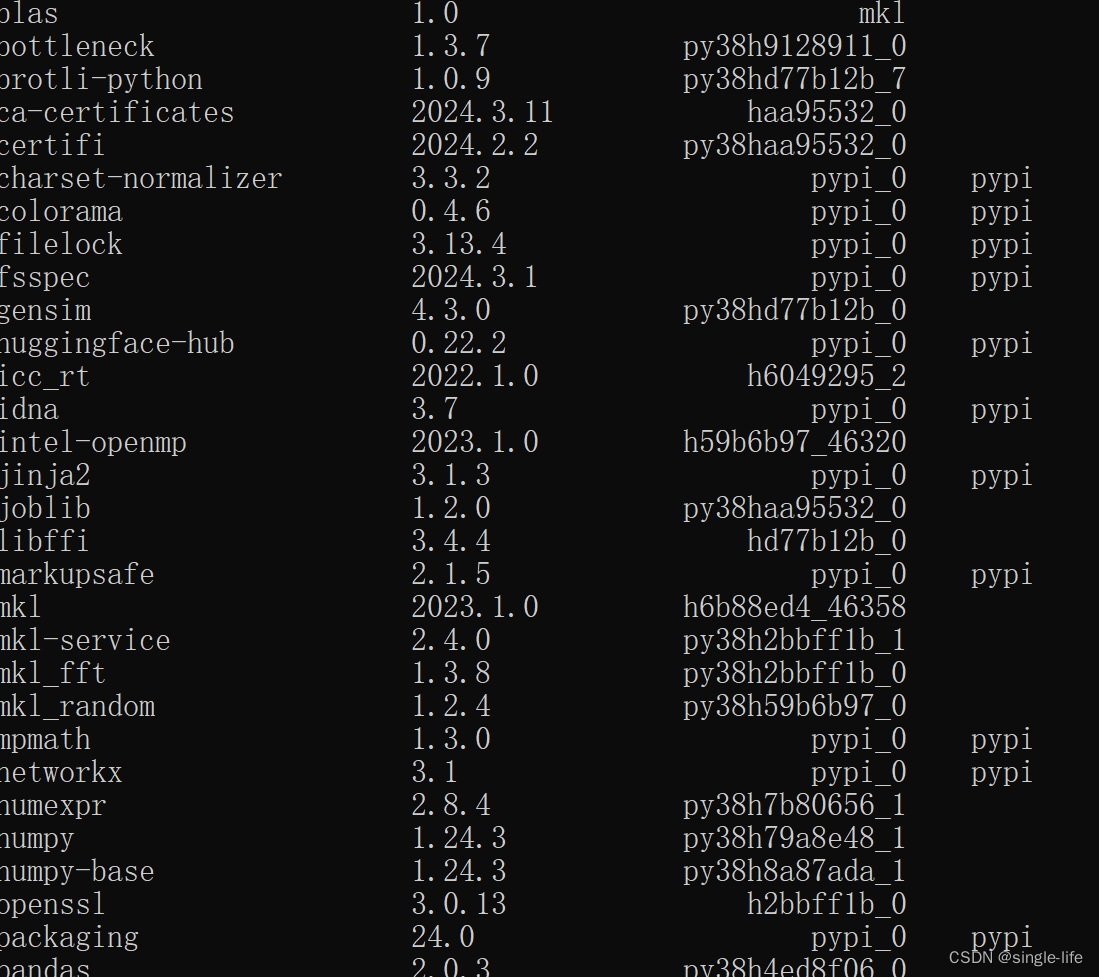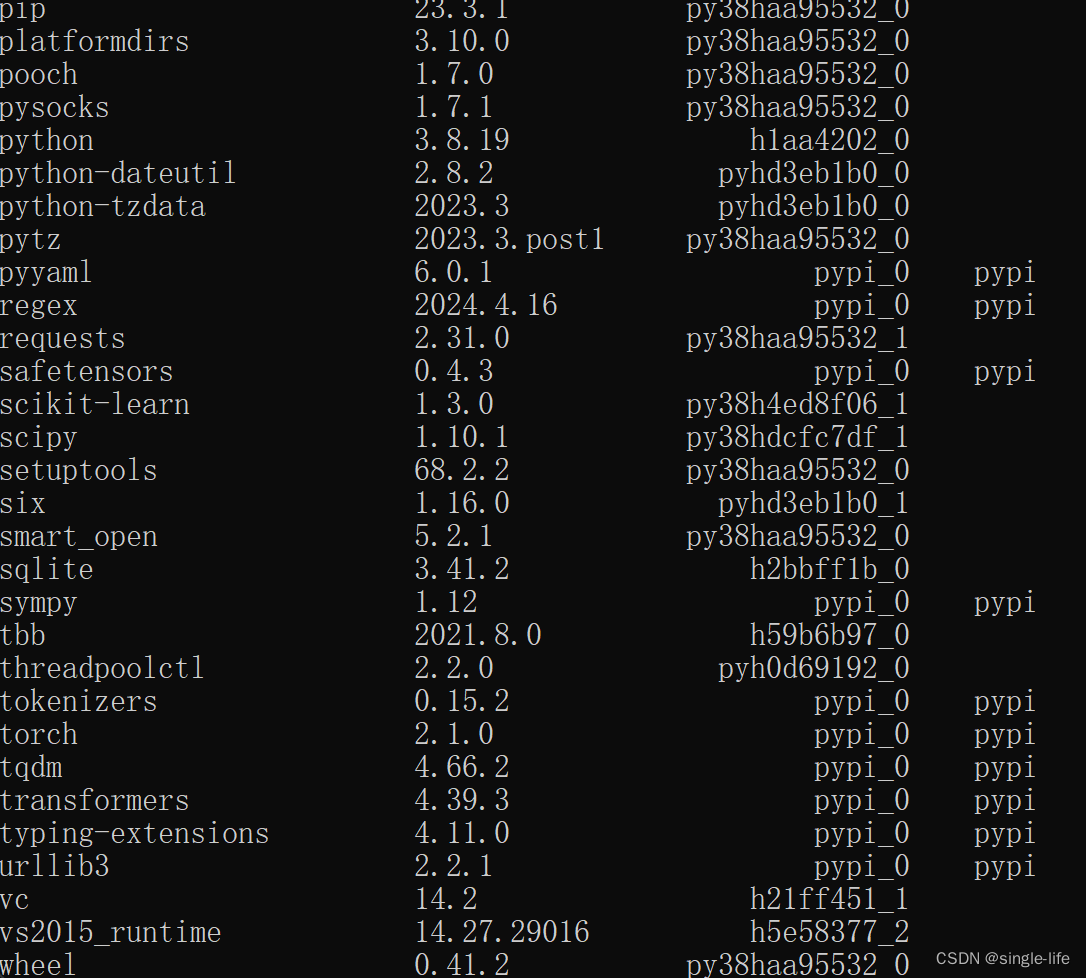前言
仅记录学习过程,有问题欢迎讨论
可能使用到的包
可以通过Anaconda直接install,不行就PIP install xxx
- Python
- Torch
- Transformers
- Scikit-learn
- Numpy
- Gensim
- Pandas
我的版本:
可以用 conda list 查看


代码
如果有包导入不进来,可以先去网上查查怎么用Anaconda下载包,
一般是conda install xxx;
还有就是项目环境的配置需要配置到对应Anaconda的环境下
注:python版本最好3.8以上。
# try to build a simple neural network
import torch
import numpy
import torch.utils.data as Data
from torch.nn import init
import torch.optim as optim
# produce data list
num_input = 2
num_example = 1000
true_w = [2, -3.4] # 真参数
true_b = 4.2 # 真 偏移量
# 特征
features = torch.tensor(numpy.random.normal(0, 1, (num_example, num_input)), dtype=torch.float)
# function
labels = true_w[0]*features[:, 0]+true_w[1]*features[:, 1] + true_b
# +噪声因子 均值为0、标准差为0.01的正态分布
labels += torch.tensor(numpy.random.normal(0, 0.01, size=labels.size()), dtype=torch.float)batch_size = 10
# 将训练数据的特征和标签组合
dataset = Data.TensorDataset(features, labels)
# 随机读取小批量
data_iter = Data.DataLoader(dataset, batch_size, shuffle=True)
# 读取并打印第一个小批量数据样本
for X,y in data_iter:print(X,y)break
# 定义模型 nn input/output
net = torch.nn.Sequential(torch.nn.Linear(num_input, 1)
)
print("net =", net)for param in net.parameters():print(param)# 使用net前 需要初始化参数 初始化
init.normal(net[0].weight, mean=0, std=0.01 )
init.constant_(net[0].bias, val=0)# 定义损失函数
loss = torch.nn.MSELoss()
# 定义优化算法
optimzer = optim.SGD(net.parameters(), lr=0.03)
print("optimzer =", optimzer)
# 训练模型
num_epochs = 10
for epoch in range(1, num_epochs+1):for X, y in data_iter:output = net(X)l = loss(output, y.view(-1, 1))optimzer.zero_grad()# 梯度清零,等价于net.zero_grad()l.backward()optimzer.step()print('epoch %d, loss: %f' % (epoch, l.item()))# 比较学到的模型参数和真实的模型参数
print('result ==================')
dense = net[0]
print(true_w, dense.weight)
print(true_b, dense.bias)








应用前景广阔 生物基3-羟基丙酸市场占比将不断提升)









